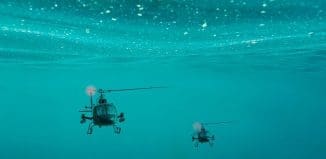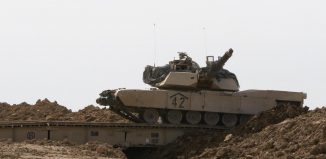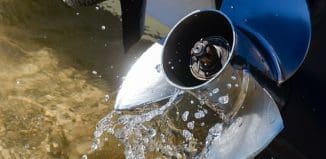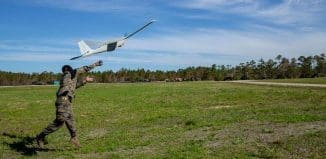Military Skeptical Towards Unmanned V-280 Valor
This post is also available in:  עברית (Hebrew)
עברית (Hebrew)
How long will it take the United States Military to convert its existing airplanes, helicopters, and tiltrotors to fly unmanned? The military claims that we are still years away from having unmanned tiltrotors and helicopters flying soldiers to and from operations, however, Bell engineers have mentioned that their V-280 Valor tiltrotor has already succeeded “fully automatic takeoff, landing, and everything in between”.
Although, the V-280 hasn’t really completed an entire flight automatically. It has succeeded to takeoff, land, and operate middair, but each automated process has been tested in isolation, with human operators controlling the aircraft before and after each automated maneuver.
The next step for Bell, is to put together all the automated functions and have the V-280 complete an automated flight, from takeoff to landing, while still having human pilots onboard just in case something goes wrong.
However, if this is true then why is the United States Military so skeptical? There is no interest for Bell to keep their tests secret from the military. In order to understand the reason for the military’s skepticism, we need to understand the specifics of the tests that Bell ran on the automated V-280.
During the test flights, the V-280 managed to fly itself for about 20 minutes according to Breakingdefense.com. The two test pilots onboard took their hands off the controls so that the aircraft would fly itself, at the end of each maneuver the pilots would retake control of the aircraft, make sure all systems are running properly and repeated the process with a different maneuver.
Additionally, modifying the V-280 to fly unmanned was more of a software and algorithm challenge rather than a mechanical one, since the V-280 is a fly-by-wire aircraft, meaning that the aircraft’s controls are electric. This makes converting the tiltrotor to an unmanned tiltrotor much easier and cheaper.
However, the problem here is that the V-280’s algorithms have been developed to grant the aircraft flight in relatively regular conditions. So the military V-280 Valor tiltrotor will have a hard time flying in dangerous situations since the unmanned V-280 hasn’t been programmed to respond to threats such as anti-aircraft fire.
The United States Military has already made advances in converting its aircraft to allow unmanned capabilities, such as DARPA’s attempt at converting the Sikorsky Black Hawk helicopter into an optionally piloted vehicle. It is now only a matter of time until military helicopters will be completely piloted by machines.






























